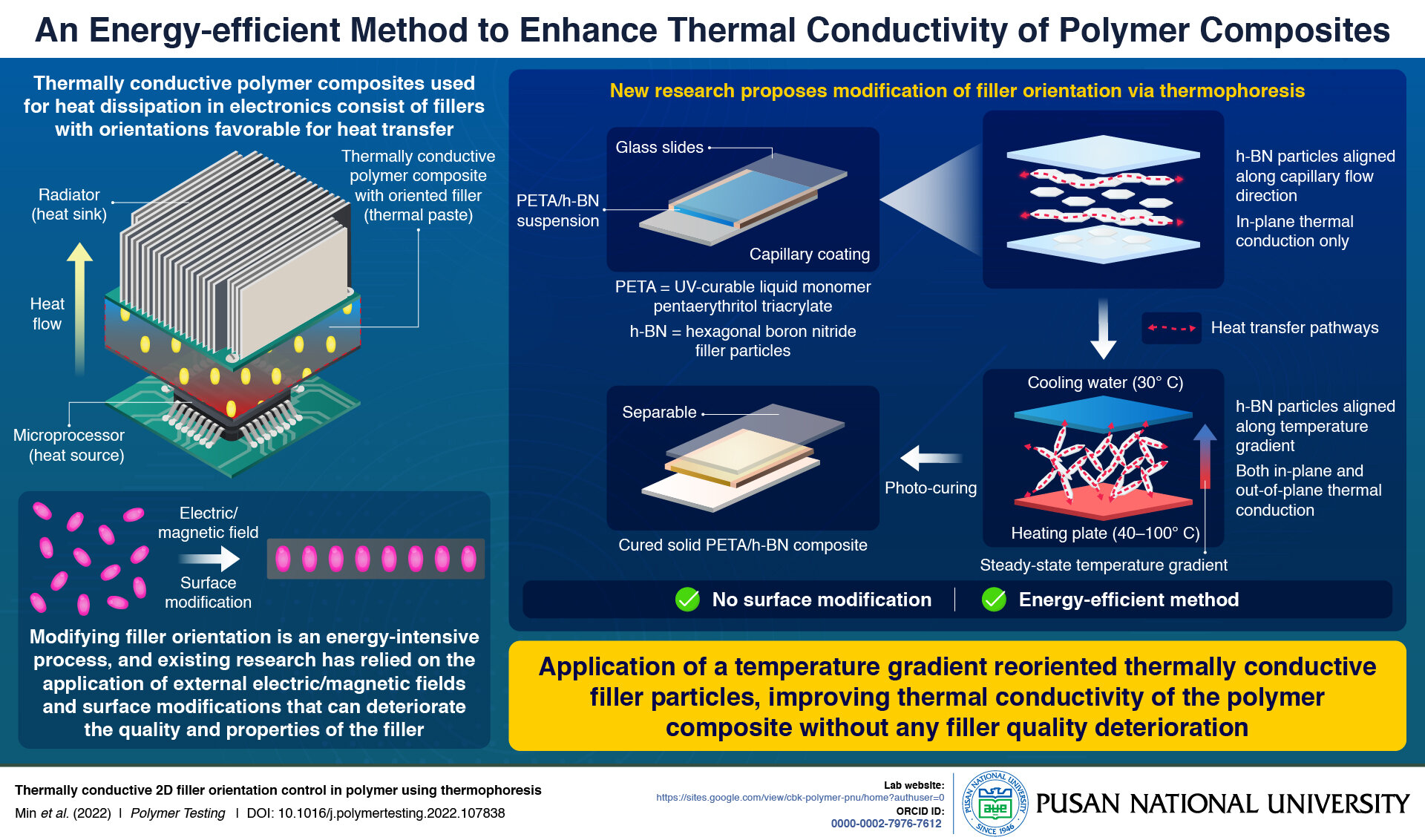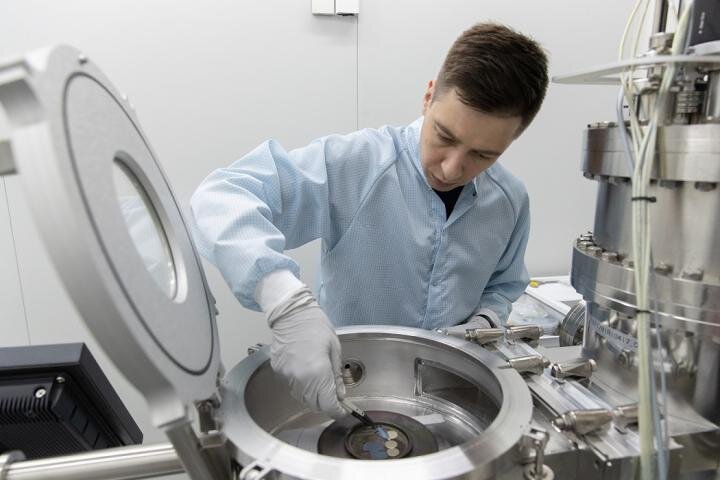#An energy-efficient method to enhance thermal conductivity of polymer composites

Table of Contents
“An energy-efficient method to enhance thermal conductivity of polymer composites”

With their lightweight nature and flexibility, thermally conductive polymer composites are applied between a heat source and a sink in electronics to dissipate the generated heat to the surroundings. Efficient heat dissipation is achieved due to the use of fillers with certain orientations that facilitate heat flow.
The conventional process of modifying the orientation of the filler material, however, is an energy-intensive process that requires the use of electric/magnetic fields and surface modifications that can compromise the filler’s quality and its thermal properties.
Now, in a new study, Professor Chae Bin Kim and his team at Pusan National University, Republic of Korea, have developed an energy-efficient process to change the orientation of the filler without the need for surface modifications.
This paper was made available online on October 17, 2022 and will be published in Volume 117 of the journal Polymer Testing on January 1, 2023.
The proposed method makes use of thermophoresis, a phenomenon in which a temperature gradient causes solid particles suspended in a fluid medium to move or rotate. To prepare the polymer composite, the researchers suspended thermally conductive hexagonal boron nitride (h-BN) filler particles in a UV-curable liquid and coated it between two glass plates.
A temperature gradient was applied along the film thickness, causing the filler particles to rotate, and realign along the applied temperature gradient. On achieving the desired orientations, the composite was photocured, resulting in a solid composite with fixed filler orientations that form a heat transfer pathway.
“To our best knowledge, the current study is the first experimental demonstration of controlling anisotropic filler orientation using thermophoresis,” says Professor Kim.
Thermally conductive polymer composites such as thermal paste are used in phones, laptops, even in batteries. Considering the growing production of electronics and the expected transition to electric vehicles, the proposed method has the potential to lower the energy cost of manufacturing thermally conductive polymer composites. Furthermore, by avoiding the need for surface modifications, highly efficient thermally conductive polymer composites can be developed for improved heat dissipation and extend the life of electronics.
“Efficient heat dissipating materials can ensure best operating conditions for the device with improved reliability, lifespan, and user’s safety,” says Professor Kim.
Apart from improving thermal conductivity, fillers are also used to alter a composite’s optical, electrical, and mechanical properties. By offering a way to reorient the filler without any surface modifications, the proposed method can also be adopted to tune the properties of a wide range of polymer composites without deteriorating their quality.
Seong-Bae Min et al, Thermally conductive 2D filler orientation control in polymer using thermophoresis, Polymer Testing (2022). DOI: 10.1016/j.polymertesting.2022.107838
Provided by
Pusan National University
Citation:
An energy-efficient method to enhance thermal conductivity of polymer composites (2022, November 30)
retrieved 30 November 2022
from https://phys.org/news/2022-11-energy-efficient-method-thermal-polymer-composites.html
This document is subject to copyright. Apart from any fair dealing for the purpose of private study or research, no
part may be reproduced without the written permission. The content is provided for information purposes only.
If you liked the article, do not forget to share it with your friends. Follow us on Google News too, click on the star and choose us from your favorites.
For forums sites go to Forum.BuradaBiliyorum.Com
If you want to read more Like this articles, you can visit our Science category.




